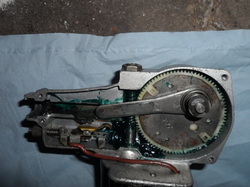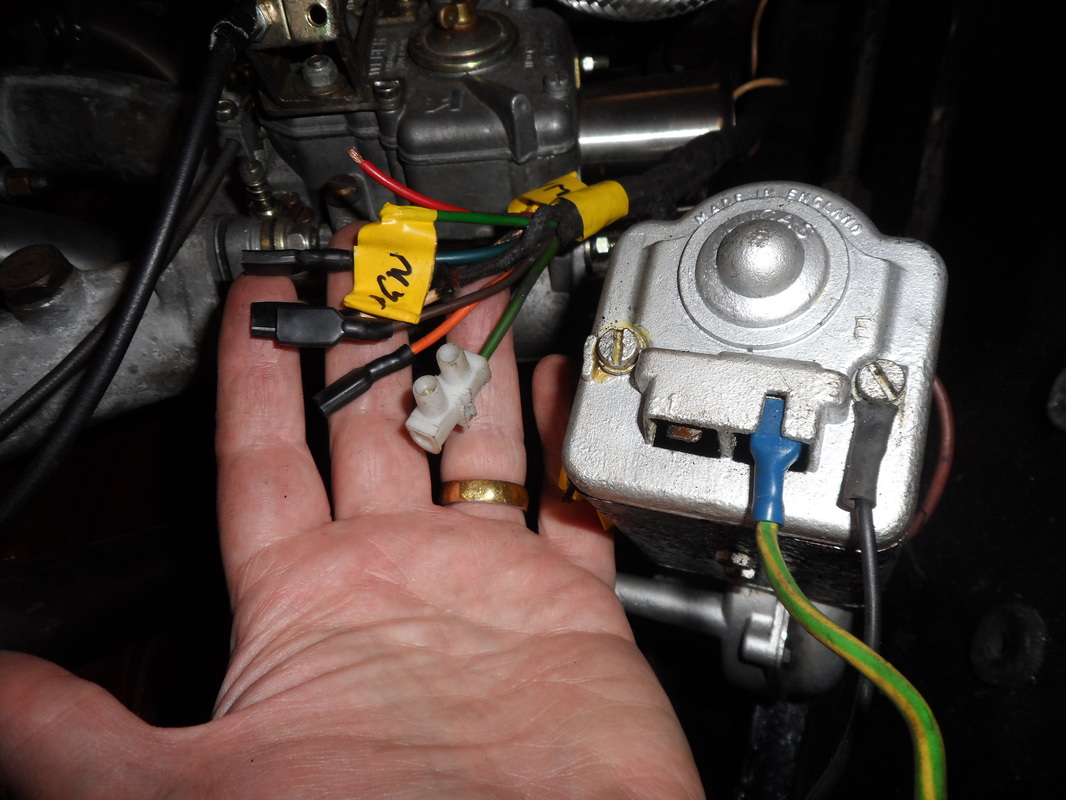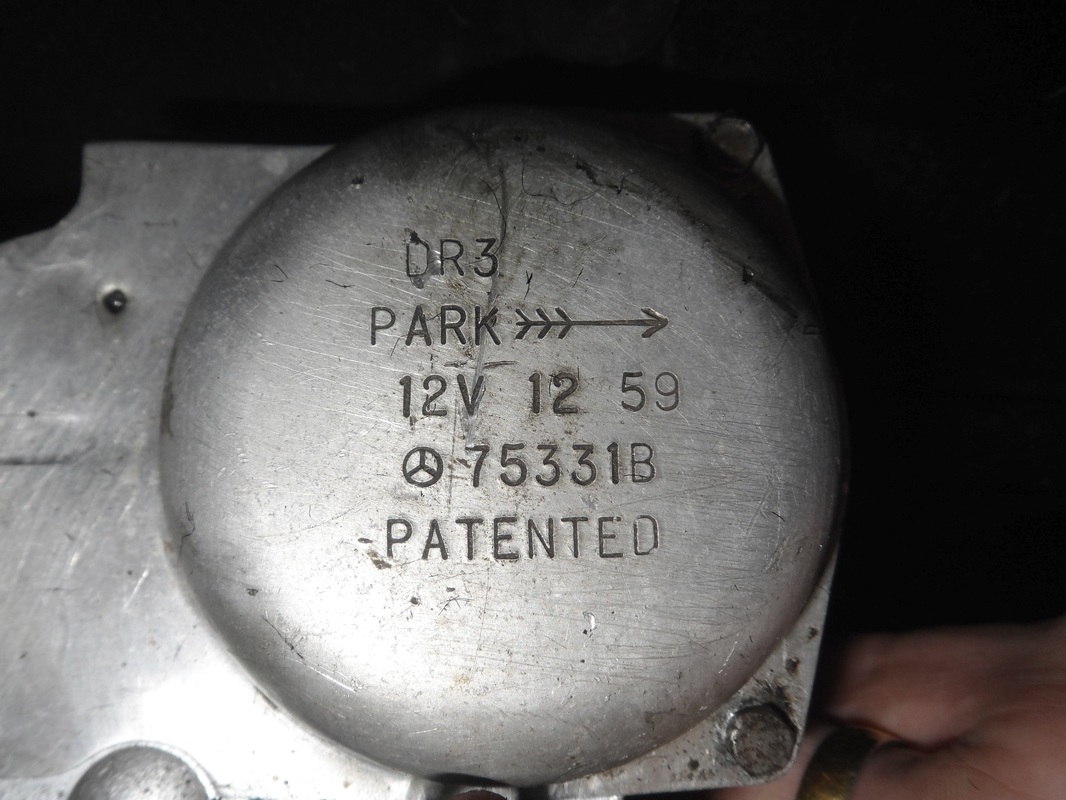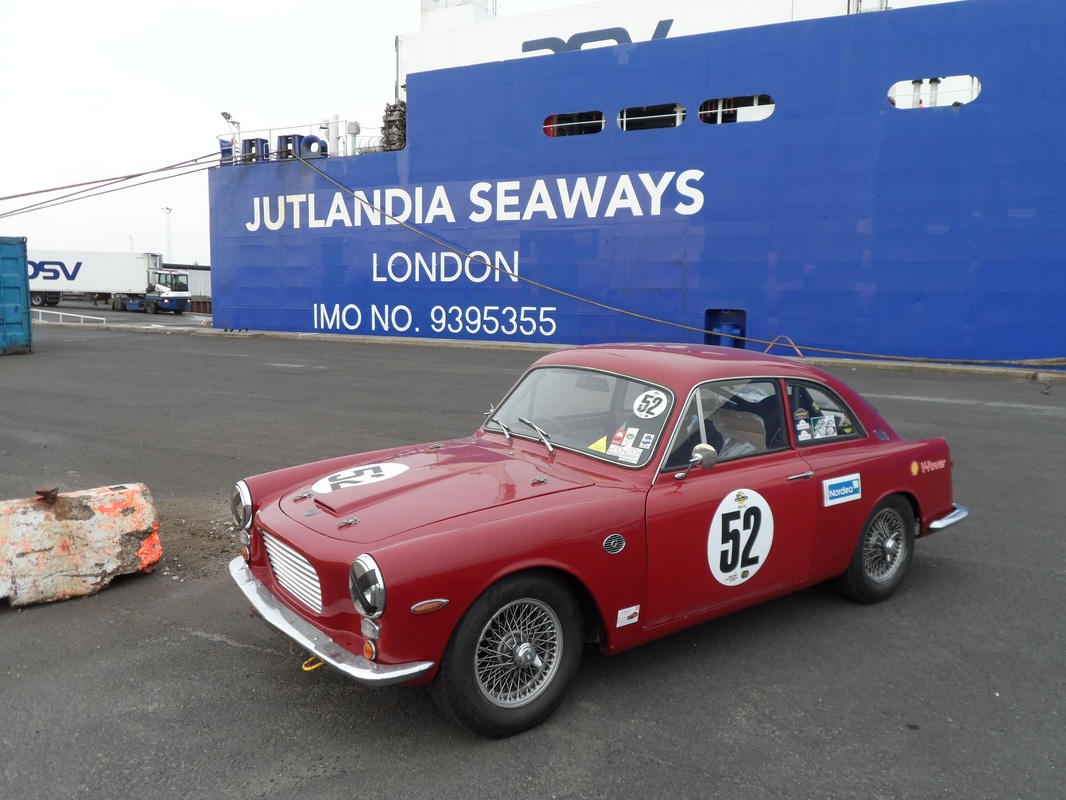Well, apart from their practical usefulness, they are a required part of the MoT test. Which is why I needed to make these work before I would be able to reregister the car in the UK.
When I began to investigate why they might not work, I found the answer pretty quickly as I grabbed a bundle of unconnected harness cables from below the carburetor. The real challenge was then finding that the harness connections bore no resemblance to the connections presented on the wiper motor.
When I began to investigate why they might not work, I found the answer pretty quickly as I grabbed a bundle of unconnected harness cables from below the carburetor. The real challenge was then finding that the harness connections bore no resemblance to the connections presented on the wiper motor.
The key to all of this was that the wiper motor was actually a Lucas DR3A, regardless of what it said on the gearbox cover. The car is supposed to be fitted with a DR3. This latter motor displayed all the wizardry of mechanical engineering at the time. It has no permanent magnet, but does all sorts of interesting things by powering a field coil using a unique wiper switch.
The correct motor provides two-speed operation and 'reverse park'. The latter means when you switch it off, the motor is immediately thrown into reverse, tapping into an ignition-switched supply on the harness that is then interrupted by contacters on the internal parking finger.
There are fuller descriptions on the web. And the most useful, including a wiring diagram, I found was here....
http://www.stretton.tv/DR1%20motor.html
In any event I was rescued by Brian, the Gilbern Owners Club's GT Historian, who produced a refurbished DR3 for me. This needed only for me to switch the gear and the 'parking finger' from the original unit and to rework the original harness, restoring the some of the blade connectors and spurs for the associated washers.
The correct motor provides two-speed operation and 'reverse park'. The latter means when you switch it off, the motor is immediately thrown into reverse, tapping into an ignition-switched supply on the harness that is then interrupted by contacters on the internal parking finger.
There are fuller descriptions on the web. And the most useful, including a wiring diagram, I found was here....
http://www.stretton.tv/DR1%20motor.html
In any event I was rescued by Brian, the Gilbern Owners Club's GT Historian, who produced a refurbished DR3 for me. This needed only for me to switch the gear and the 'parking finger' from the original unit and to rework the original harness, restoring the some of the blade connectors and spurs for the associated washers.

The gear (here 150 degrees) determines the sweep of the blades. Different specifications rely on how far the arm is pivoted from the central axis of the gear - varying the arc of the reciprocating arm.
And the parking finger (positioned in the lower left of the gear case) determines whether the motor parks on a 'push' or a 'pull', hence where the car the wiper blades park. There is a twiddly knob on the end for fine adjustment.
And the parking finger (positioned in the lower left of the gear case) determines whether the motor parks on a 'push' or a 'pull', hence where the car the wiper blades park. There is a twiddly knob on the end for fine adjustment.



 RSS Feed
RSS Feed